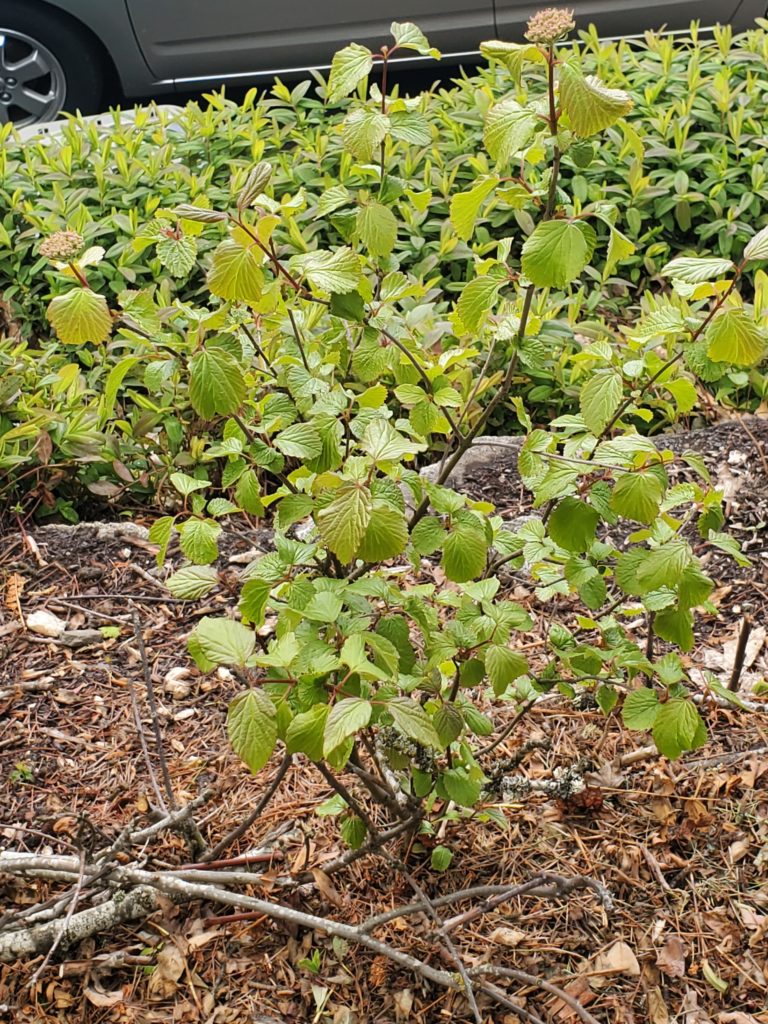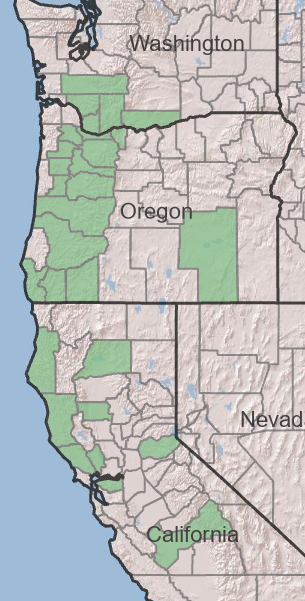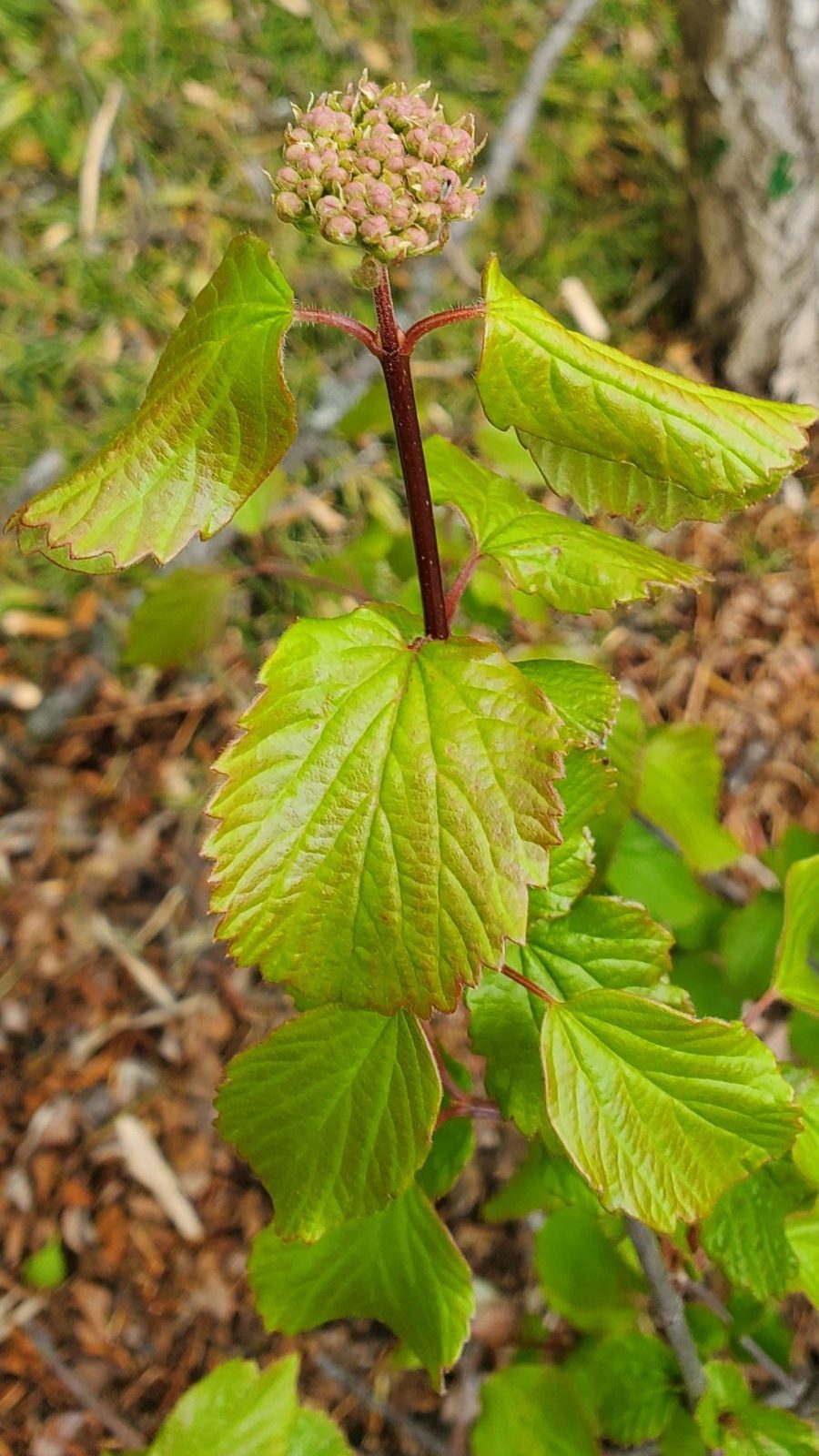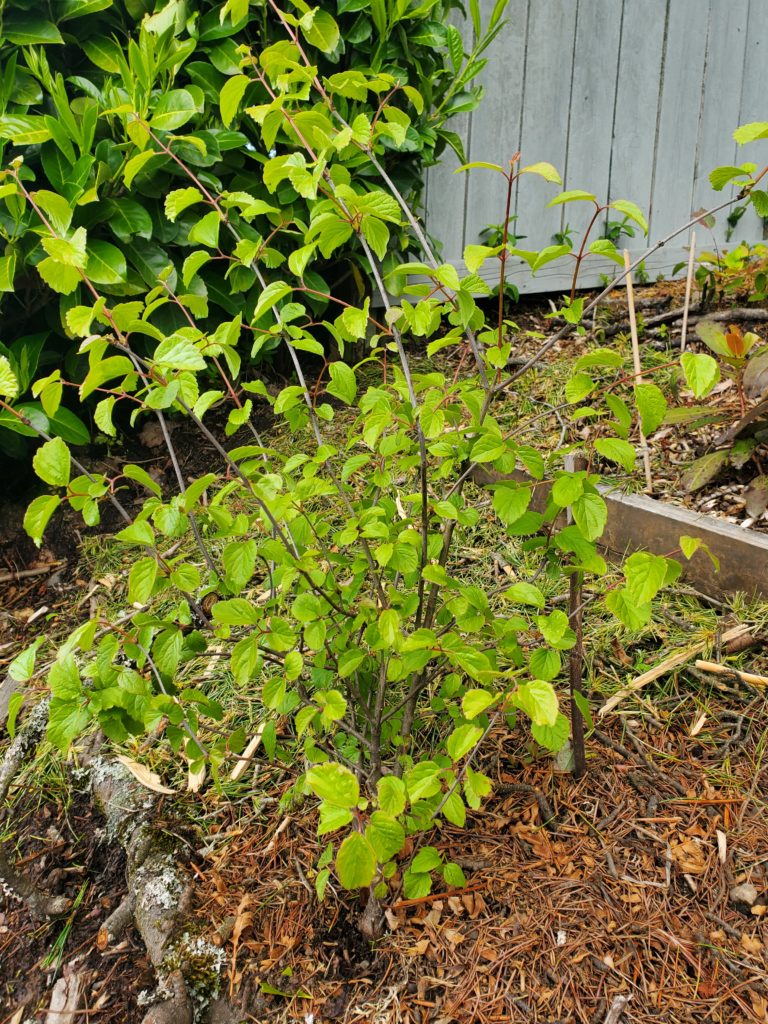Written By: Anne Ternes
- Scientific Name: Viburnum ellipticum
- Canopy Layer: Large Shrub
- Attracts: Insect Pollinators, Butterflies, Pest-easting Insects, Birds, and Small Mammals

Oval-leaved viburnum, a.k.a. common viburnum, Oregon viburnum, western blackhaw, and the western wayfaring tree, is a large, showy shrub that benefits a variety of wildlife. Attracting pollinators and pest-eating insects, supporting over thirty species of butterflies, providing food and shelter for birds and mammals, our region’s native viburnum does it all.

Oval-leaved viburnum is native to the west side of the Cascades, from central Washington, down through Oregon, and into central California. Versatile in its habitat, it is not picky, growing well in full sun to full shade and in dry or moist soils. On top of it all, oval-leaved viburnum is both drought and flood-resistant. It is most commonly found in lowland thickets and open woods. Oval-leaved viburnum does very well in border areas; consider planting it on the edge of a thicket of trees, alongside a rain garden, or as a transition between a pollinator meadow and garden.

Oval-leaved viburnum is a delight to behold all through the growing season. Even in winter without any leaves, oval-leafed viburnum’s red-tinted stems give color to the landscape. Beginning in spring, robust, serrated leaves emerge, giving way to clusters of small, stark white flowers in mid to late spring. The white flowers develop into drupes that begin green, then darken to red around August, then darken further to a deep black near October. In the fall, the foliage turns a rich red or vibrant purple with shades of brass, adding unique hues to the fall palette.

Filling in the large shrub vegetation level, growing nearly as wide as it does tall, mature oval-leaved viburnum usually stands between five and fifteen feet tall and measures six to ten feet across. Large shrubs help reduce soil erosion by creating a break in rainfall. They provide dynamic shelter for many birds and small mammals. Some nest in large shrubs or comb the shrubs for insect meals, while others stay near to keep safe from predators who are often too big to navigate the tight spaces created by sprawling stems. Others will be attracted when the fruit is ripe and ready for picking.

While oval-leaved viburnum is easy to grow and a boon to local wildlife, it is more difficult to find locally than other native shrubs. A handful of garden shops and nurseries in the Portland-Vancouver metro area carry them, but go online or call first before making the trip. Finding it will be the most challenging part of incorporating oval-leaved viburnum into your space. Once found and established, oval-leaved viburnum will require little from you to thrive, aside from the occasional pruning. Native shrubs are by no means few and far between in local gardens, but oval-leaved viburnum is a hidden gem that will enhance the appeal of your garden, both for you and visiting critters.
Sources:
- “arrowwood, viburnum, (Viburnum opulus=swamp elder), wild raisin.” nwf.org. Native Plant Finder. https://www.nwf.org/NativePlantFinder/Plants/3449
- “Western blackhaw.” Native Plants Database. Audubon. https://www.audubon.org/native-plants/search?zipcode=97203
- “Oval Leaved Viburnum – Viburnum ellipticum.” emswcd.org. East Multnomah Soil & Water Conservation District. 2016. https://emswcd.org/oval-leaved-viburnum/
- “Viburnum ellipticum.” Landscapeplants.oregonstate.edu. Oregon State University. https://landscapeplants.oregonstate.edu/plants/viburnum-ellipticum
- “Viburnum ellipticum Hook. – common viburnum.” Plants.usda.gov. United States Department of Agriculture, Natural Resources Conservation Service. https://plants.usda.gov/home/plantProfile?symbol=VIEL